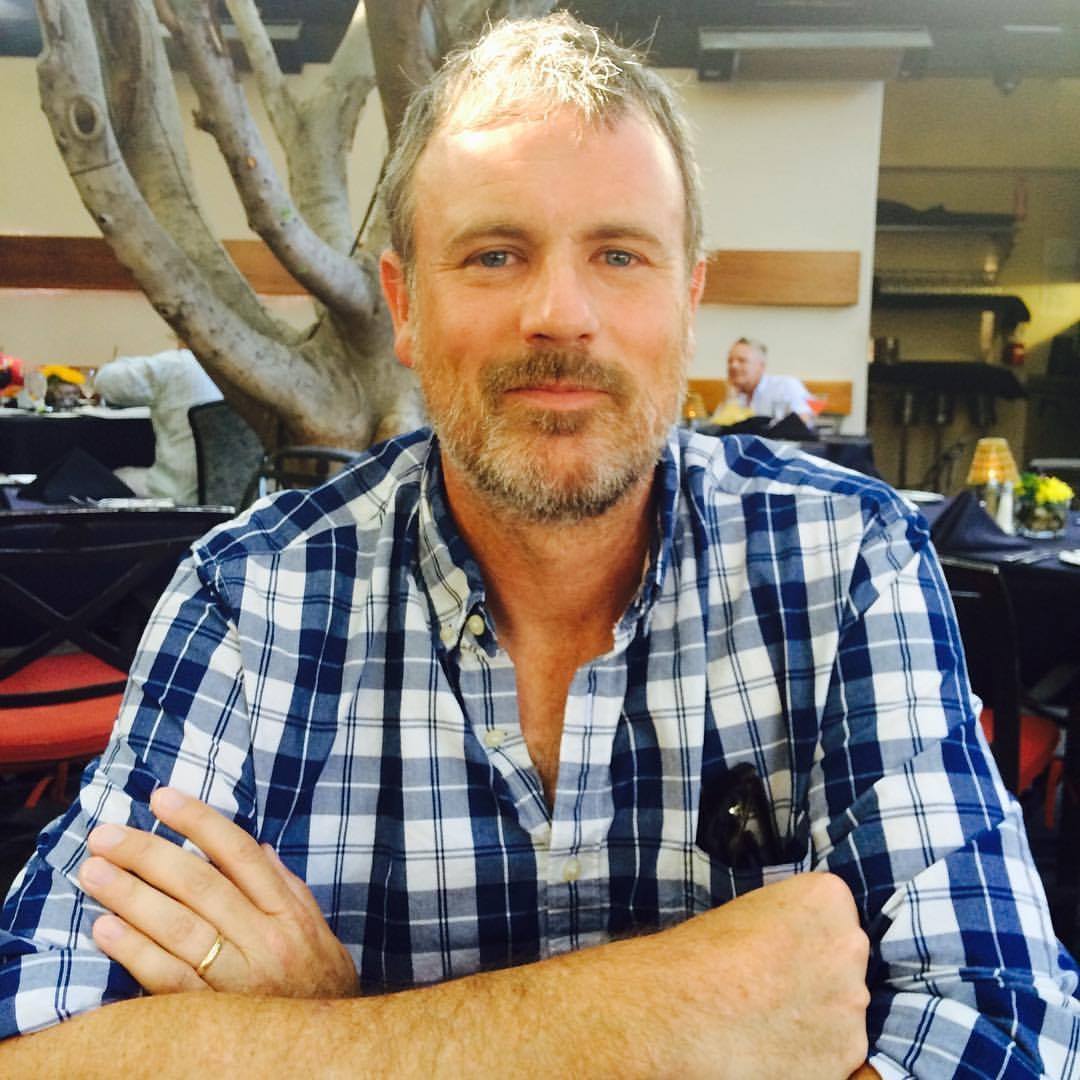Photo by Anne FishbeinFew recognize the professor with the close-cropped mane as he quietly sips his coffee at a kiosk in front of UC Irvine's Humanities Office Building. Occasionally, a fellow professor walks by and waves or says hi, but most students ignore him. He's smiling, contented. At last, the quiet life.
For Mike Davis, it's pure bliss.
Since the start of this year's spring semester, the famed Los Angeles social historian and author has been a visiting professor at UC Irvine, teaching a course on the history of street gangs. On July 1, he joins the university's faculty as a tenured history professor. He hopes his stay will be just as quiet as his arrival.
Davis is the former meat cutter, truck driver, Communist Party member and civil-rights activist whose book City of Quartz (Verso, 1990) is widely considered the definitive Los Angeles text. What makes the book so powerful—and makes Davis so dangerous—is that it convinced just about everyone, liberals and conservatives alike, that barring a radical change, the future will be scarier than the past. Davis was hailed and reviled as a dark prognosticator when his dystopian vision seemed borne out by the 1992 riots.
Davis' arrival at UCI has its own special irony. A chapter of Quartz, “Homegrown Revolution,” laments what he considers one of the most dangerous political trends since the end of World War II: the rise of powerful homeowners associations in California and their effect on politics, the state economy and the environment. This phenomenon has its roots in Orange County—particularly Irvine—which is California's most elaborately master-planned community.
After Quartz, Davis became the go-to man for everyone from unions seeking his support for organizing campaigns, urban-planning schools seeking his advice on more inclusive architecture, community groups fighting wrongful convictions, and hordes of reporters seeking pithy quotes about the latest social trend or political controversy. He wrote articles for LA Weekly and The Nation about everything from El Nio to the LA riots to the sham trial of six Latino youths convicted of murder in the accidental death of a white teenager in San Clemente.
Davis also appeared in City on the Edge, a 1991 video produced by Local 11 of the Hotel Employees N Restaurant Employees Union (HERE). In it, Davis said that the low wages paid to Los Angeles workers were helping push the city toward violence—a statement that seemed to predict the next year's riots. Besides Davis, the video also featured soundbites from various downtown civic boosters who weren't aware their comments would become part of the union's campaign to drive away convention business.
Many of those civic boosters later took part in the attack on Davis' follow-up book about LA, Ecology of Fear: Los Angeles and the Imagination of Disaster (Vintage, 1999) after it topped the Los Angeles Times' best-seller list. They aggressively campaigned against the book and persuaded the Los Angeles New Timesto pick through Ecology of Fearat random, searching for vulnerabilities. The paper ultimately concluded that one-third of the book's randomly selected footnotes didn't pass muster. In an interview with New Times reporter Jill Stewart, Davis conceded that he made some unintentional errors in trying to weave together what was obviously a complicated narrative.
While Davis didn't react defensively to the media feeding frenzy, some other journalists did. “As with any 484-page book with 831 footnotes, Ecology of Fear contains some mistakes,” wrote The Nation's Jon Wiener, who is also a UCI history professor. “This is an inescapable pitfall of publishing.”
Wiener's article pointed out that one of the alleged “mistakes” in the book was Davis' calculation that there are 2,000 gangs in LA. In one of the seemingly countless anti-Davis screeds published in 1998, Salon magazine observed that, in fact, there are only 1,850 gangs in the City of Angels. As it turns out, Davis factored in Orange County gangs, which are often grouped with their northern counterparts by law-enforcement officials. “But even if [Salon] were right,” Weiner argued, “should Angelenos feel better about the social health of their city because it has a mere 1,850 gangs?”
When the dust finally settled on the Ecology of Fear controversy, the book was still selling strongly, and even the LA Times grudgingly conceded that Davis' factual mistakes were at best “minor.” But the experience seems to have soured him on the public spotlight. He politely declined a request to be interviewed for this story, saying only that he prefers the quiet life.
Davis spent much of the next two years teaching history in upstate New York and retreating to Hawaii to write the book Late Victorian Holocausts: El Nio, Famines and the Making of the Third World (Verso, 2001) before ultimately relocating to San Diego. That's when UCI came calling.
“We were eager to get him, and he was eager to come,” said Weiner, who has been on UCI's faculty for more than two decades. Offering Davis a tenured position “had the unanimous support” of the history department, Weiner added.
“You can't get appointed to this kind of position without the support of the entire department, and the chancellor also has to sign off on it,” he said. “I think it's a great coup for UCI to have an internationally prominent historian of Southern California and its social and political environmental history join our staff. We're thrilled.”

Award-winning investigative journalist Nick Schou is Editor of OC Weekly. He is the author of Kill the Messenger: How the CIA’s Crack Cocaine Controversy Destroyed Journalist Gary Webb (Nation Books 2006), which provided the basis for the 2014 Focus Features release starring Jeremy Renner and the L.A. Times-bestseller Orange Sunshine: The Brotherhood of Eternal Love’s Quest to bring Peace, Love and Acid to the World, (Thomas Dunne 2009). He is also the author of The Weed Runners (2013) and Spooked: How the CIA Manipulates the Media and Hoodwinks Hollywood (2016).

